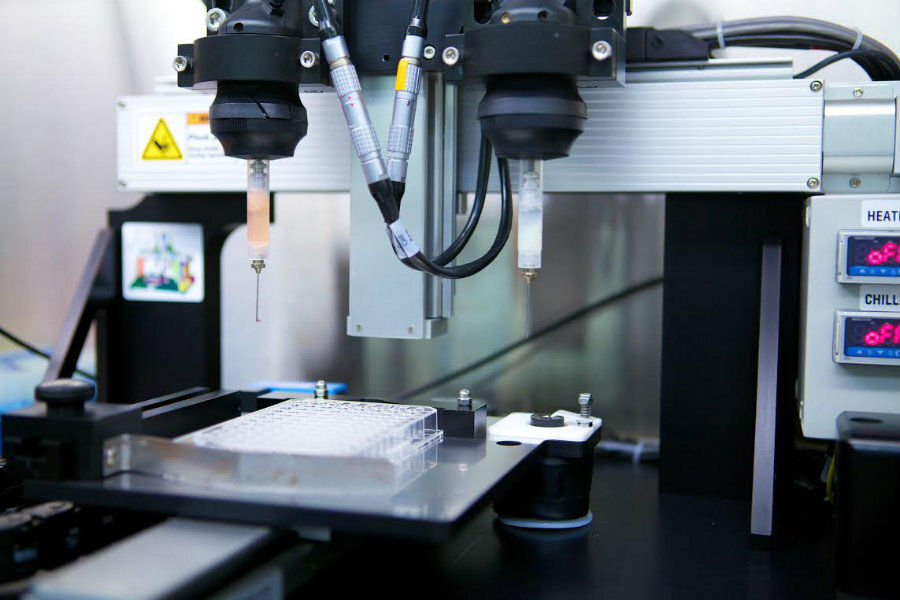3D-printing human skin: The end of animal testing?
Loading...
The era of animal testing may be coming to an end.
Earlier this month, French beauty conglomerate L’Oreal announced a partnership with bioprinting company Organovo, setting the stage for using 3D-printed human skin to evaluate cosmetics. The collaboration could pave the way both for bioprinting on a commercial scale, and for animal-free testing across a number of industries.
“3D printing is really powerful because you can make a nice, thick tissue with all the cell types,” says Keith Murphy, co-founder and CEO of San Diego-based Organovo. “That makes it more replicative of native tissue,” which in turn makes for better product testing.
For years, scientists have been working to apply 3D printing — a $2.7-billion industry as of 2013 — in medicine and veterinary care by using living cells instead of plastic or metal in the same layering process that has brought us toys, food, accessories, even cars, Popular Science reported.
“Instead of printing a test tube out of plastic to do chemistry in, let's say we now print our test tube out of tissue, and we do chemistry in the tissue and look at the response in real time,” Lee Cronin, a University of Glasgow chemist and nanoscientist, told the magazine.
“That’s where things get really interesting,” he added.
So interesting that, according to Popular Science, investment has soared as labs and biotech companies worldwide began developing more sophisticated printers and printing prototype body parts, including heart valves, ears, bone, and skin. Scientists are currently exploring the technology’s potential to treat burns and aid in reconstructive surgery for humans.
Bioprinted tissues could also make product testing cheaper and more accurate, cutting down the need for tests on animals.
“Such technology could speed up drug development by replacing less-ideal animal testing or the simpler testing done on human cells in petri dishes — and perhaps save millions or even billions of dollars from being wasted on dead-end drug candidates that fail in human clinical trials,” wrote LiveScience's Jeremy Hsu.
For L’Oreal, bioprinting tech is the next step in its efforts at cosmetics innovation.
The company's technology incubator “is driven by collaborations with emerging companies, entrepreneurs, and experts in a diverse array of fields,” Guive Balooch, L'Oreal global vice president for digital research and innovation, said in an email. “[S]o once we saw the groundbreaking work that Organovo was doing in 3-D bioprinting, we were excited about the potential of working together to develop a new method of printing skin tissue for advanced research at L’Oreal.”
Since the 1980s, the company has grown and analyzed its own human tissue samples in an effort to move away from animal testing. Today, about 60 scientists work in the L’Oreal laboratories in Lyon, France, using tissue donated by plastic surgery patients to grow about 100,000 skin samples — roughly the size of a cowhide — every year, Bloomberg reported.
San Diego-based Organovo’s technology promises to speed up, refine, and automate the whole process in the next five years. As part of the partnership, L'Oreal will provide skin expertise and initial funding, while Organovo, which is already working to print liver and kidney tissues, will provide the technology, according to Bloomberg.
The partnership is currently in the research stages, and it is not yet clear when the technology will be applied to product testing, Organovo's Mr. Murphy says.
Still, it’s the first time for this kind of bioprinting technology to be used in cosmetics, Mr. Balooch said in L’Oreal and Organovo’s joint statement.
“Our partnership will not only bring about new advanced in vitro methods for evaluating product safety and performance, but the potential for where this new field of technology and research can take us is boundless,” he said.






